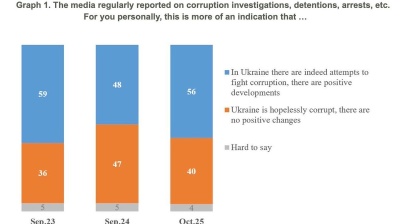IMF improves Ukraine’s 2019 growth outlook to 2.99%, below the 3% needed to trigger warrant payments
The International Monetary Fund (IMF) improved Ukraine’s growth outlook slightly from 2.7% for the full year set in April to 3% in its latest World Economic Outlook, released this week.
The IMF numbers are an improvement on Ukraine’s own official forecast. In March, the Ukrainian Economy Ministry revised downward its forecast for the growth of Ukraine's real GDP in 2019 to 2.8% year on year from 3% y/y. The ministry also forecasts 2020 growth of 3.8% y/y, and in 2021 of 4.1% y/y, according to local media.
If growth does comes in at over 3% and the size of the economic is more than $125bn then that triggers Ukraine’s warrant payouts to investors that received them as part of a debt restructuring deal signed five years ago. However, the IMF is actually forecasting growth for this year to be 2.99% rising to 3.011% in 2020 and 3.19% in 2022.
But the relatively low rate of growth is a blessing in disguise, as the low economic growth forecast from the IMF means the warrant payouts will be minimal for the next few years.
Ukrainian Prime Minister Oleksiy Honcharuk said in September he wanted to see GDP growth rise to 7%, but that would be expensive for Kyiv, as the payout rates jump considerably above a 4% GDP growth rate.
If growth tops 3% this year then payments will not start before January 2021 and will end in 2040. They will be made two years after the relevant thresholds have been crossed: for example, payments triggered by GDP data for 2019 will be made in 2021. Payments will be limited to a total of 1% of GDP in the reference year until 2015, when this ceiling will be lifted.
If Ukraine misses the 3% target then “miniscule payments will start in 2022 for 2020 when the economy is expected to grow to 3.1% and continue for several years,” says Ivan Tkachev, the economics editor at RBC.
Assuming the warrants are triggered in 2020 and Ukraine grows at the slow pace predicted by the IMF in its WEO this October, then the warrant payments will only amount to a mere $2.9mn from the 2020 result, which is payable two years later in 2022.
In the next years between 2020 and 2024 the IMF predicts that Ukraine’s growth will remain between 3% and 3.4%, which means warrant payments of $41.7mn (from 2021 but payable in 2023), $60.5mn (2022, 2024) and $118.3mn (2023, 2025).
If growth rises above 4% and does in fact approach the 7% goal the government has set, then Ukraine would end up paying a maximum of 1% of GDP for the warrants a year, which currently would be slightly more than $1bn per year.

News

Putin's meeting with Trump in Budapest is a slap in the face for the EU
As preparations get underway for a highly anticipated summit between Russian President Vladimir Putin and former US President Donald Trump in Budapest, attention is turning to an unusual but politically sensitive detail: how will Putin get there?

Zelenskiy leaves Washington empty handed, Trump and Putin head to Budapest to talk business
Ukrainian President Volodymyr Zelenskiy went into a White House meeting with US President Donald Trump on October 17 hoping for a big arms deal. He came out of the meeting empty handed.

Taiwan’s KMT elects new leader
Cheng Li-wun, the only female contender among six candidates, defeated former Taipei mayor Hau Lung‑bin by a wide margin, winning over 50% of the ballot in the leadership race for Taiwan’s opposition Kuomintang on October 18.

Gold price in Sri Lanka plunges
The sudden drop of around LKR20,000 in both 22- and 24-carat sovereigns adds to a volatile recent run for precious-metals pricing in the island nation: only days earlier, gold prices were noted to be climbing.

